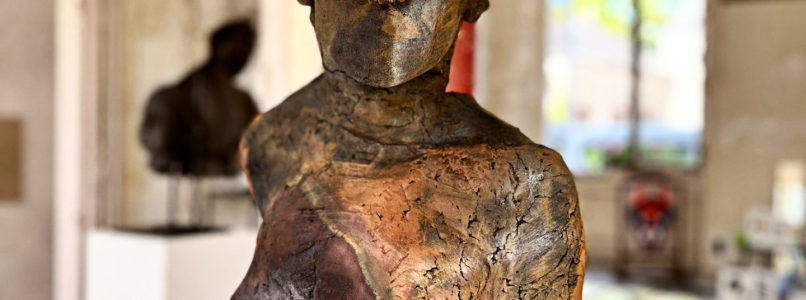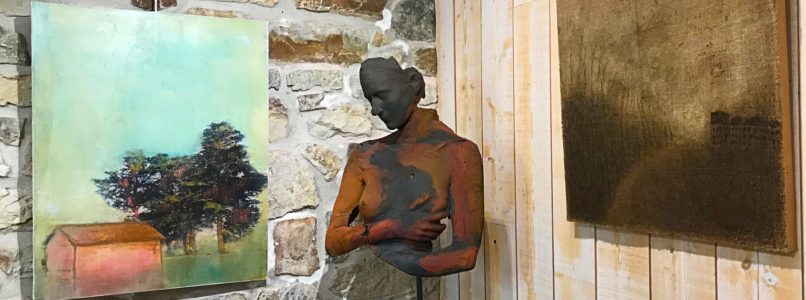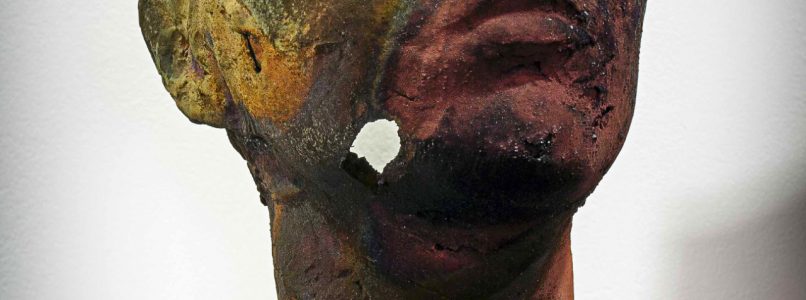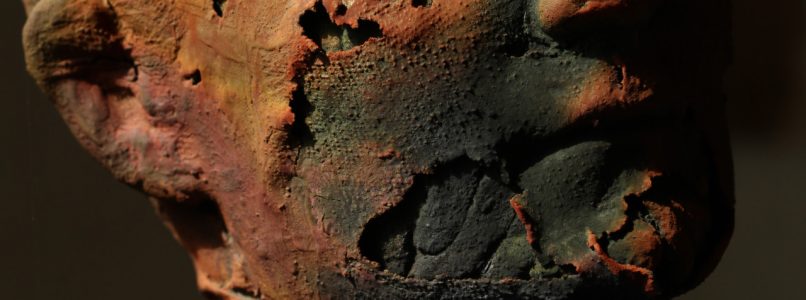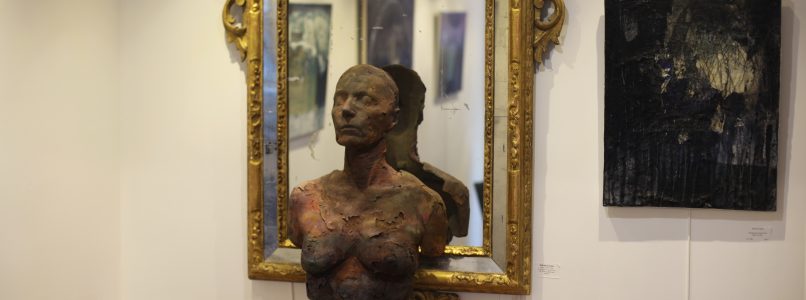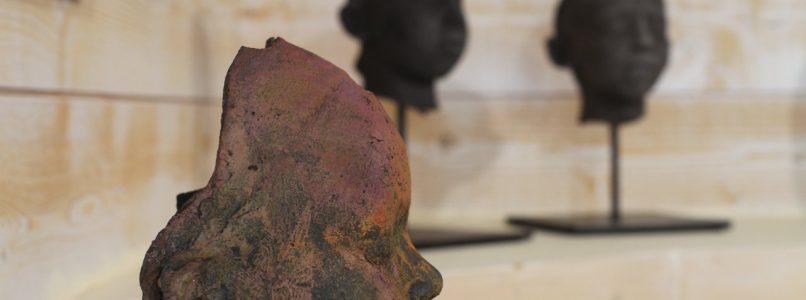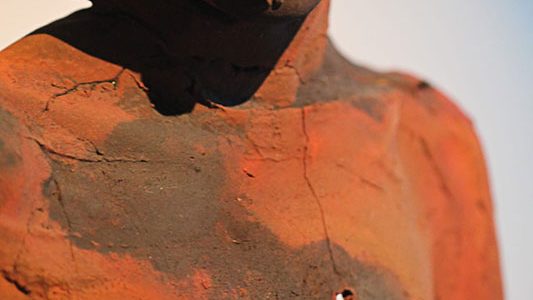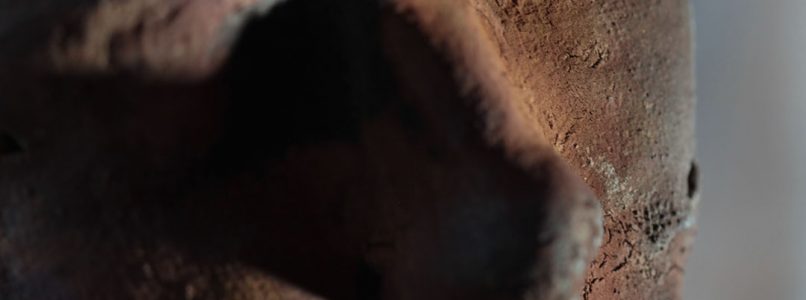“There is a crack in everything. That’s how the light enters” Leonard Cohen sang.
This is what Fanny Alloing’s work illustrates. First, molded prints: face, bust. Then, her creations became larger, with body prints, made on nude models, often dancers – she is a former dancer. Split, cracked, they appear frail, fragile like molt skins: she calls them “chrysalis”.
Her artistic work is recent: “I started to present my clay molds in 2014” she explains. I used to stage molts of plaster. The imprint, as close as possible to the being that laid down, and the exit of the model of its chrysalis: this is the essence of my work”. For five years, the plaster has become a matrix, she manipulates the clay in thin layers inside, resulting in thick works of two centimeters, “thin as autumn leaves”. Each step has a symbolic value. First, the process: “Molding is a two-person experience and when people come out of the mold, it’s like a rebirth.” The materials, then: “The plaster nudes are ghostly, like an insect molt, when I stamp the clay inside the plasters, I find the density of the flesh”. Then comes the transport of the dry clay print for cooking, with the possibility of its destruction, the extreme delicacy of the molding can cause the loss. Approach and object speak of the body, of the experience of the body as knowledge of finitude and intuition of its mortality. Here is the foundation of this tragic sense of human destiny, embodied in a fleshly envelope where grace and fragility intermingle.
From the appearance of mummies wrapped in plaster strips of her beginnings, the human “chrysalis” of Fanny Alloing have reached, by the passage to terracotta, an additional force of evocation. The crude of the material that cracks, mingles with the sophistication of the enameling effects and the subtlety of the rendering of the bodies. There is acute empathy for man, who speaks of the bond, the vulnerability, and the dignity. This “fight to keep the being”, of which the ceramist speaks about the process of creation, acquires its second, deeper, metaphysical meaning.
Mikaël Faujour / La revue de la ceramique et du verre

